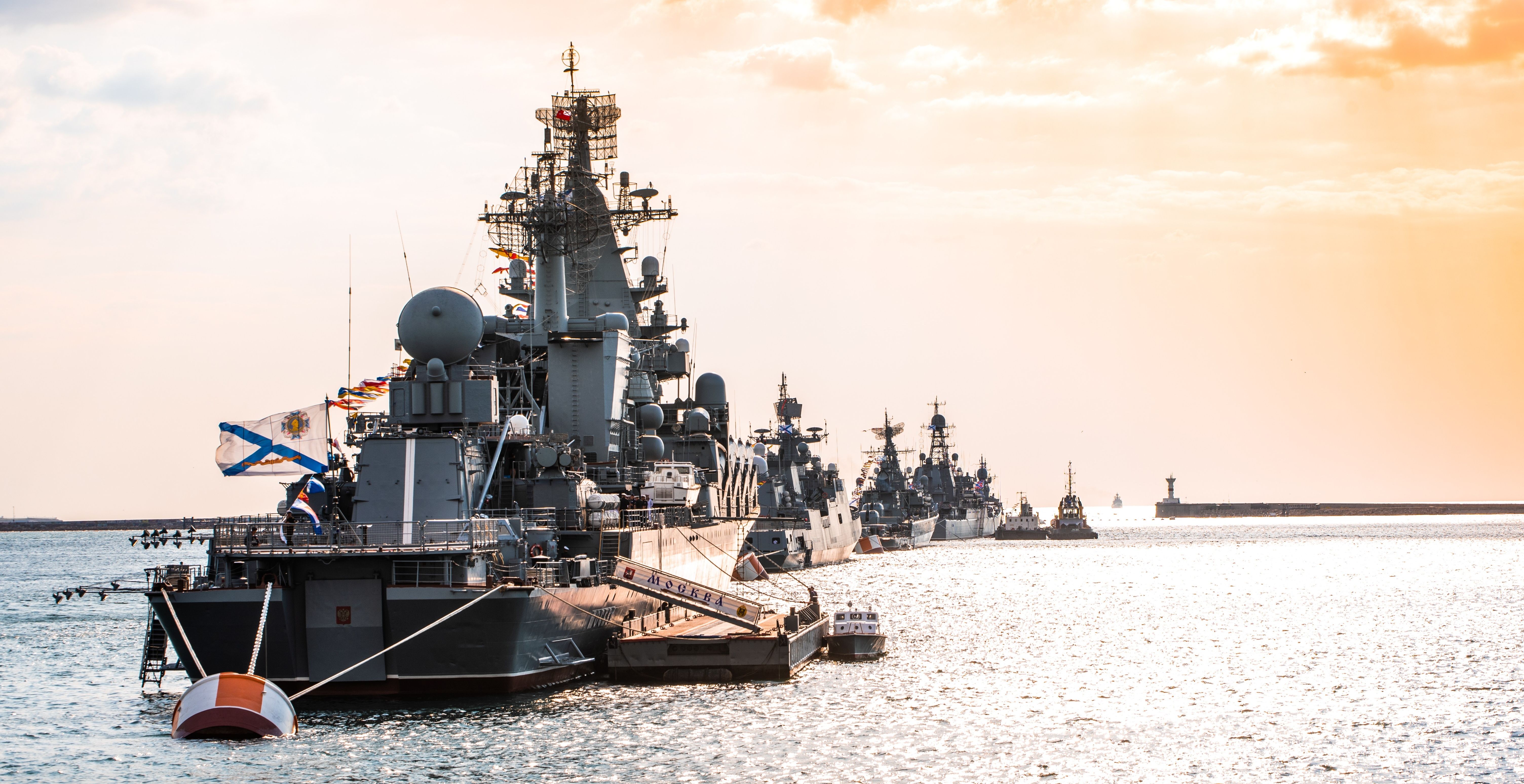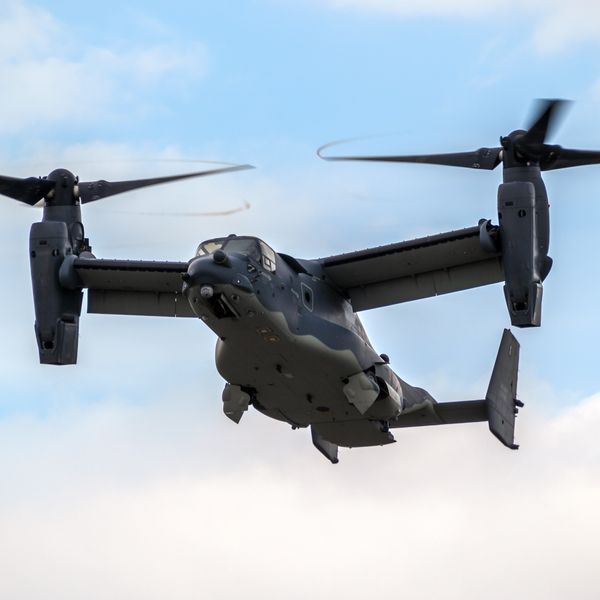In an extraordinary, but little noticed development in the war in the Ukraine, Vice Admiral Oleksly Neizhpapa, head of Ukraine’s Navy, indicated on November 12 that his country had broken the Russian naval blockade of the port of Odessa despite having few capital ships of its own.
Through a combination of drones, long-range missiles, and special forces, Ukraine’s Navy has driven Russian naval vessels away from Odessa – potentially reopening the port to international trade. This does not mean that Russia’s blockade of Ukraine’s coastline is completely broken, since Russia can continue to attack merchant ships with long-range missiles or drones, but it certainly raises interesting questions about the future of the naval war in the Black Sea.
Among the instruments creatively applied by the Ukrainians are missile strikes against Russian naval ships, most notably with the dramatic sinking of the Moskva in April 2022. In September 2023, Ukraine struck Russia’s naval headquarters in Sevastopol in two separate attacks with British-supplied cruise missiles, further complicating Russia’s Black Sea naval operations. Last but not least, Ukraine has used special forces with jet skis to mount additional attacks on Russian submarines and naval facilities in Eastern Crimea. According to an October 13 Washington Post report, Ukraine’s attacks have caused Russia to move part of its fleet to Novorossiyisk on the eastern side of the Black Sea out of range of Ukraine’s weapons.
While Ukraine’s attacks are significant in and of themselves since they could pave the wave for a resumption of sea-borne trade, perhaps more important is the fundamental challenge these developments pose to cherished notions of sea power and, more generally, the overall purpose of navies that continue to absorb billions of dollars each year in established navies around the world. A paradigm shift in the application of sea power in war may be upon us.
Back to the Future
The Ukrainian approach to the naval war in the Black Sea can be summarized as “Jeune Ecole Meets Anti-Access Area Denial,” providing us with a window into the future of naval warfare that may not be fought by aircraft carriers and heavily armed guided missile cruisers. Instead, a new generation of weapons that threaten large surface ships may well be upon us.
Jeune Ecole refers to a French naval doctrine that emerged in the late 19th century that sought to take advantage of the new weapon of the day – the torpedo – in which small and numerous boats with this weapon could potentially threaten the large dreadnought battleships for a fraction of the cost of the battleship. In short, it offered a way for a weaker state to take on a stronger state with a larger Navy. Indeed, the U.S. Navy drew upon these ideas in constructing its PT boats in World War II to threaten the more powerful Japanese Navy in the Pacific early in the war. While the Jeune Ecole seemingly disappeared into the dustbin of history in the cataclysmic battles of the Atlantic and Pacific Oceans during World War II, it may be making a comeback in the naval war unfolding in the Black Sea enabled not just by torpedoes but by land-based drones and long-range missiles.
The anti-access area denial, or A2AD, phenomenon has been emerging over the last 20 years with the proliferation of anti-ship and long-range ballistic and cruise missiles around the world. The accuracy of these weapons has steadily improved with the construction of sensor-based precision strike data complexes that fuse global positioning data with other information feeds that offer the prospect of hitting mobile targets at sea. The U.S. Navy first noticed this phenomenon in the late 1990s when the Iranians began digging tunnels and revetments along the Bandar Abbas coastline as well as on the islands of the Abu Musa and the Tunbs islands that it seized from the United Arab Emirates in 1971. Both locations provided the Iranians with the capability to interdict shipping routes into and out of the Gulf with land-based weapons.
By the end of the 1990s, anti-ship missiles had been stuffed into the well-prepared concrete-reinforced tunnels and were virtually impervious to attack. Sure enough, the Navy realized it could no longer send its aircraft carriers into the Gulf as it had routinely done throughout the 1990s to conduct counter-WMD strike missions over Iraq as well as support Operation Southern Watch.
The Iranian tunnels proved a precursor to the much more extensive and formidable Chinese threat from its DF-series of mobile anti-ship missiles that can threaten shipping more than 1000 miles from its coastlines. These missiles far outrange U.S. Navy carrier-launched airplanes. According to the Department of Defense, China is aggressively developing an entire family of new missiles to include hypersonic glide weapons capable of hitting moving ships at extended ranges across the Pacific Ocean. China’s arsenal calls into question whether the aircraft carrier has become vulnerable and obsolete – at least as an instrument of power projection against opponents boasting arsenals of long-range missiles.
The End of Seapower as We Know It?
The broader question needing serious debate and analysis is whether the proliferation of these mobile, long-range missile systems, drones and other weapons represent the end of an era in which established navies inexorably have focused on building fewer and ever more expensive multi-mission ships.
For example, according to the Congressional Research Service, the U.S. Navy’s latest Constellation class multi-mission frigate now under construction will cost over $1 billion per ship in a projected program that will deliver 20 vessels over the next decade. The exorbitant costs of these vessels represent a powerful constraint on the number that can be bought, even for the United States and its $700 billion-plus annual defense budget. The poster child for high-cost naval vessels is the Ford class aircraft carrier, estimated to cost over $13 billion each for the class of five ships.
The implications of the naval war in the Black Sea raise serious questions about whether investment of such staggering amounts of money, not just in the United States but elsewhere, is worth it. If billion or multi-billion-dollar ships can be held at risk (and sunk) by missiles and/or robots that are a fraction of these ships’ cost, it suggests that the calculus calling for construction of expensive, multi-mission ships cries out for serious review.
***
It is unlikely that institutions like the U.S. Navy will absorb the broader lessons from the Ukraine-Russia naval war and willingly give up its cherished systems that have proven their worth in the past. Career paths by entrenched professional officer communities make it nearly impossible, for example, for the Navy to phase out its aircraft carriers – which also have 50-year lifespans when they enter service. Buying new systems that would end or threaten these communities would mean a complete redesign of the naval service.
Fundamentally changing the Navy’s force structure would mean taking on these entrenched and powerful communities and, perhaps most importantly, would mean changes to the personnel system upon which the Navy and the country depend – not something to be undertaken lightly. Regrettably, Congress also is part of the problem – choosing pork barrel politics to provide jobs in their districts rather than exercising effective oversight and considering new policy and procurement directions unlikely to come from the institution itself.
However, preliminary lessons from the Black Sea naval war suggest that established ways of thinking about navies, their purposes, and their vulnerabilities needs serious analysis and soul searching. Paradigm change surrounding the war at sea already may be upon us. Above all, we should seek to avoid a battlefield shock to the system akin to Pearl Harbor that would remind us that we should have paid closer attention all those many years ago when Iranian earth movers started building their concrete reinforced tunnels for anti-ship missiles along shorelines in the Persian Gulf.
















